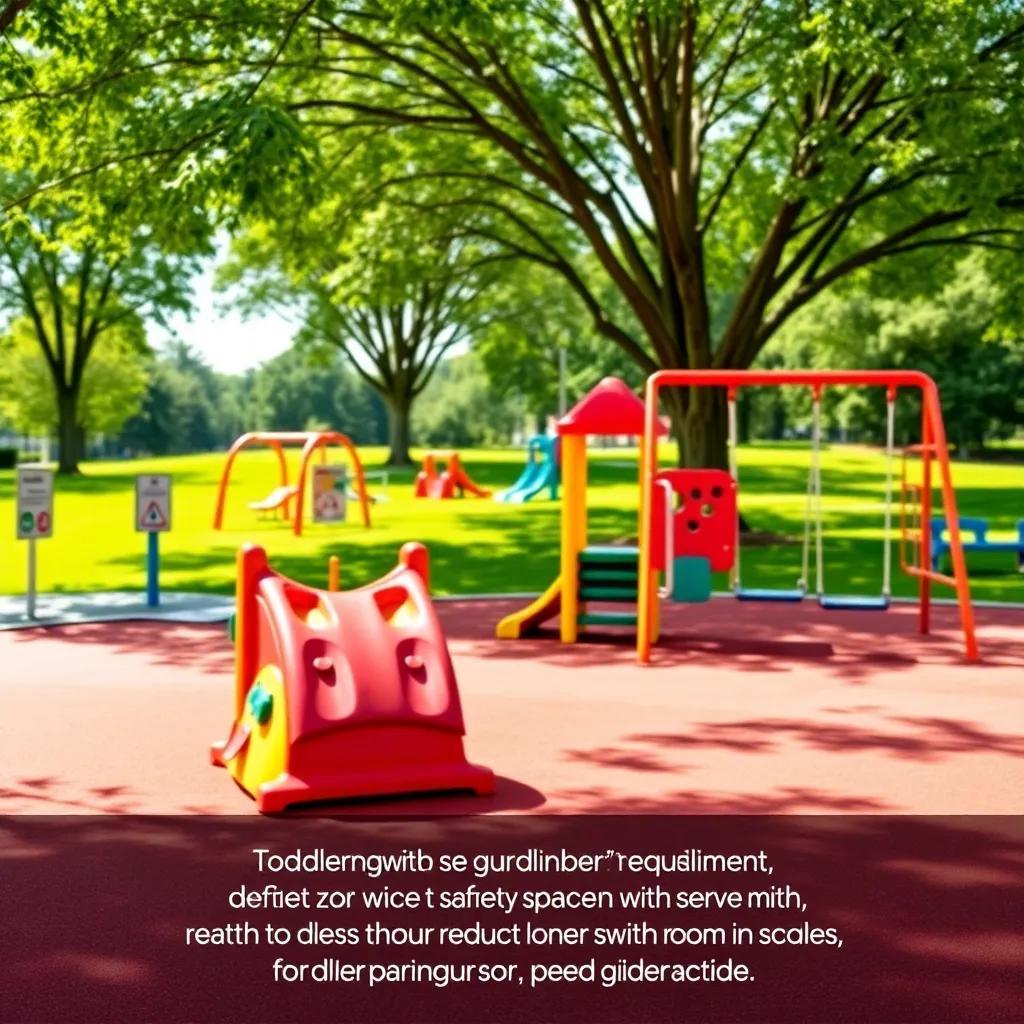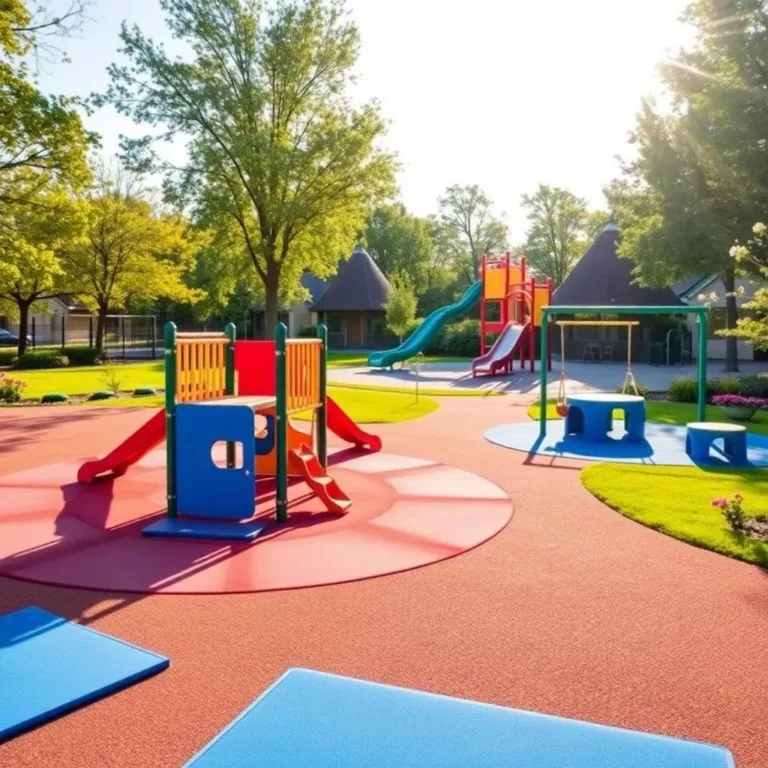Are you ready to create the ultimate outdoor playground? I’m excited to share all the fun details about designing a play area that’s not only safe but also filled with joy and adventure! From understanding safety regulations to choosing the right equipment, this guide will help you build a playground where kids can laugh, explore, and make lifelong memories! Let’s jump right in!
Safety Regulations for Outdoor Play Areas
When it comes to designing an outdoor play area, safety regulations are the first thing that pops into my mind! After all, I want to create a fun and secure space for kids to explore and enjoy! Adhering to safety standards means less worry for us adults and more freedom for the kiddos—sounds like a win-win, right?
Here are some key safety regulations I always keep in my back pocket:
- ASTM F1487 Standards: These guidelines cover everything about playground equipment. From design to installation to maintenance, following ASTM standards helps in minimizing accidents.
- CPSC Guidelines: The Consumer Product Safety Commission has laid down some fantastic rules, too. These guidelines focus on dimensions, spacing, surfacing materials, and even accessibility issues, ensuring that every child can play safely!
- ADA Accessibility: Ensuring that playgrounds are welcoming for children with disabilities is super important. The Americans with Disabilities Act provides guidelines for making play areas accessible. This means thinking about things like wheelchair ramps and ground-level activities.
- Fall Zones: Safety doesn’t stop at the equipment! Having adequate fall zones around play structures is key. This is where kids might land if they take a tumble, so the surface material has to be soft enough to cushion any falls. Think rubber mats, wood chips, or even grass!
By sticking to these regulations, we create an environment where kids can be adventurous without the worry of accidents. It’s like building them a little fortress of fun! So, let’s keep these guidelines in mind while crafting an amazing play area that unfolds all the joy of childhood!
Recommended Sizes Based on Age Groups
Now that we’ve talked about safety, let’s dive into how to size that outdoor playground! The size of the play area really matters! I mean, who likes to feel cramped when they’re trying to climb, swing, or just run wild?
Here’s what I’ve learned about recommended sizes based on age groups:
- Toddlers and Preschoolers: For the little explorers (ages 2-5), you’ll want at least 500-700 square feet. This gives them space to crawl, toddle, and engage in those fun motor skill activities without bumping into each other! Imagine giggles and playful shouts echoing in a cozy space!
- School-Age Children: For kids aged 6-12, a medium play area of about 1,000-1,500 square feet is ideal. This size accommodates more active play, such as climbing structures and running games. Plus, it awards them the freedom to be imaginative!
- Tweens and Teens: For older kids (ages 13+), you’ll need 1,500-2,000 square feet or more. This larger area allows for sports, games, and even chill spots to hang out with friends. They’ll appreciate a spacious playground where they can unleash their energy—without stepping on each other’s toes!
Having enough room means kids can explore freely and engage at their own pace. It’s amazing to see how a well-sized play area can inspire creativity and social connections! Let’s create a playground that’s big enough for everyone to have fun and feel safe!

Factors Influencing Playground Size
When planning a playground, several factors come into play that can affect the size of the area. Let’s break it down so it’s easy to understand! After all, I want to help you create a fantastic space without any hiccups!
Here are some of the key influences on playground size:
- Number of Children: The first thing to think about is how many kids will use the playground at once. A larger group will require more space. For instance, if you have a daycare, the play area should be big enough for several toddlers to run around without bumping into each other.
- Types of Equipment: What kind of fun stuff are you including? The more equipment, the larger the area needs to be! For climbing structures, swings, and slides, consider the fall zones and safe distances between each piece. Nobody wants a swing colliding with a slide!
- Age Groups: We touched on this earlier, but it plays a big role! Different age groups need different types of play. Toddlers need cozy spots to explore, while older children might want room for sports and games. Remember to allocate enough space for both!
- Environment: The location can also change the size. In urban areas, space might be tighter, pushing you to get creative! In more rural settings, you may have more room to play, which is fun!
Thinking about these factors can make a world of difference. So, let’s consider them carefully to create a playful paradise that everyone can enjoy!
Designing for Different Types of Equipment
Designing a playground is like putting together a puzzle! Each piece of equipment serves a purpose and has its own special requirements. I find it super helpful to think about how each type of play equipment will fit into the space!
Here are some important considerations for different types of playground equipment:
- Climbing Structures: Kids love to climb! When you include things like jungle gyms or climbing walls, they need to be safe and accessible. Think about the height and fall zones around the structures to keep little adventurers safe while they conquer their mountain!
- Swings: Who doesn’t love swings? When setting them up, ensure there’s enough space for each swing to arc freely. Plus, safe spacing between swings helps keep the fun going without accidents!
- Slides: Slides come in all shapes and sizes! Choose heights appropriate for the age group using them. Don’t forget to design safe access points and landing zones. I always think about how exciting it feels to slide down—let’s make it safe and fun!
- Sensory Play Equipment: Incorporating sensory play options, like sandboxes or water tables, is a fantastic way for kids to explore! Ensure these areas have proper drainage and are easy to clean.
- Sports Equipment: Basketball hoops and soccer goals can be a big hit! Just make sure there’s enough space for kids to enjoy playing without running into others. Clear pathways are a must!
Thinking about these elements as you design will help create a playground that feels engaging and exciting! Remember, safety and fun go hand in hand, so let’s create a space that sparks joy and adventure!
Creating a Flexible and Inclusive Play Space
Building a flexible and inclusive play area is like giving every child a ticket to adventure! I can’t stress enough how important it is to create a space that meets the needs of all kids, no matter their abilities!
Here are some fun tips to help make your playground adaptable and welcoming:
- Zoning for Activities: Divide the playground into zones for different types of play! Maybe there’s a climbing area, a swinging zone, or a quiet spot for imaginative play. This way, kids can choose what they want to do and have enough room for everyone to enjoy their favorite activities!
- Multifunctional Equipment: Consider using equipment that serves multiple purposes. A climbing structure with built-in seating can be a hangout spot or a climbing challenge. This gives kids options and keeps things interesting!
- Open Space: Don’t fill every inch with equipment! Leave open areas for running and playing tag. Kids love to spread their wings, and open spaces encourage creativity!
- Inclusive Play: Make sure to include equipment that all children can access, like wheelchair-friendly swings or low platforms. This opens the world of play to everyone!
- Flexible Seating: Provide spots where caregivers can relax while keeping an eye on the kids. Bench seating can also encourage group discussions or a break from playtime!
Designing a flexible and inclusive playground creates an environment where all children can thrive! It promotes friendships, teamwork, and loads of fun adventures. Let’s bring smiles to every child’s face with a playful paradise that welcomes everyone!

